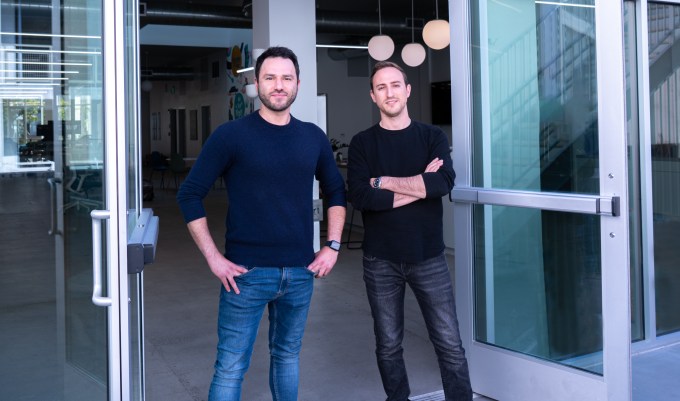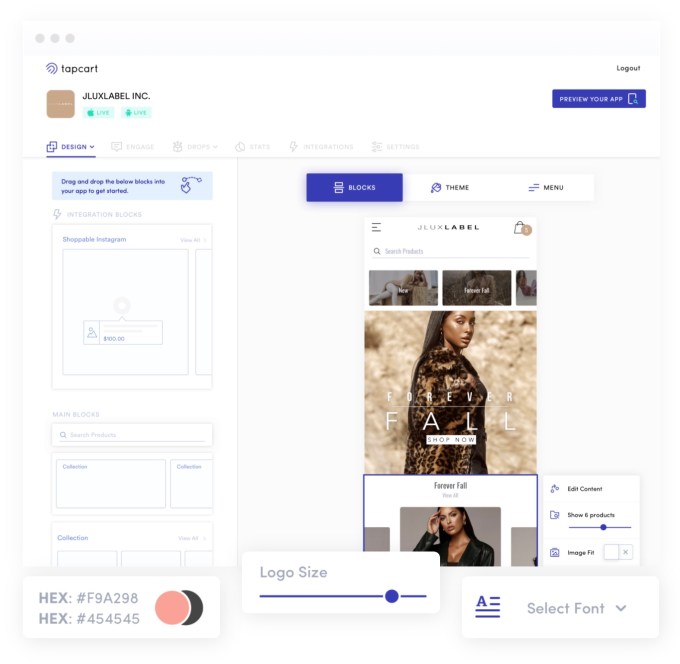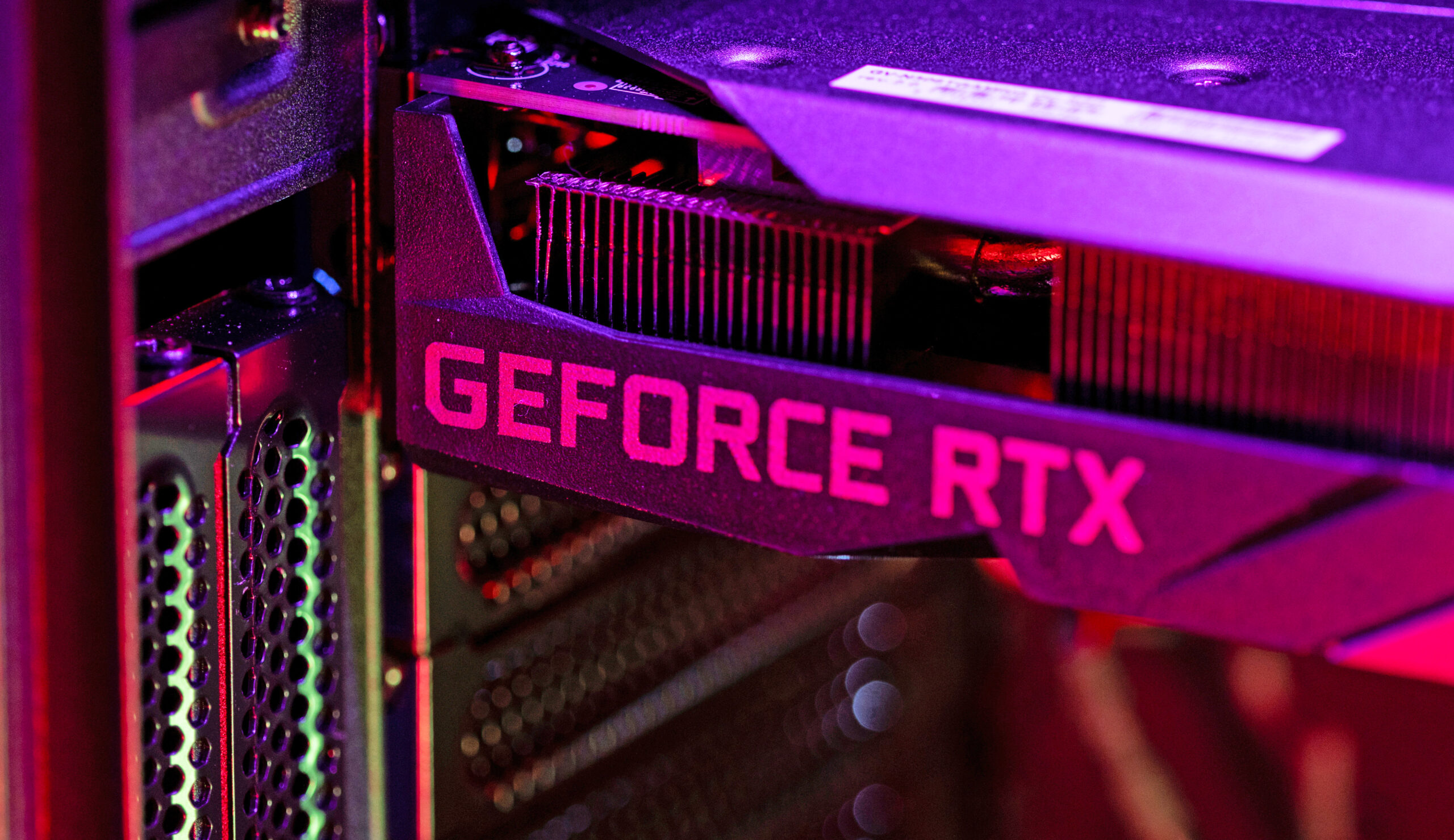Shopify modified the e-commerce panorama by making it simpler for retailers to arrange their web sites each shortly and affordably. A startup known as Tapcart is now doing the identical for cell commerce.
The corporate, which has referred to itself because the “Shopify for cell apps,” as we speak powers the procuring apps for high brands, together with Vogue Nova, Pier One Imports, The Tons of, Patta, Tradition Kings, and hundreds extra. Following a yr of 3x income progress, partially pushed by the pandemic, Tapcart is as we speak asserting the shut of a $50 million spherical of Collection B funding, led by Left Lane Capital. Having clearly taken discover of Tapcart’s traction with its personal service provider base, Shopify is among the many spherical’s individuals.
Different traders within the spherical embrace SignalFire, Greycroft, Act One Ventures and Amplify LA.
Tapcart’s co-founders, Sina Mobasser and Eric Netsch, have labored within the cell app business for years. Mobasser’s earlier firm, TestMax, supplied one of many first take a look at prep programs on iOS, whereas Netsch had extra not too long ago labored on the company facet to create cell and digital experiences for manufacturers. Collectively, the 2 realized the potential in serving to on-line retailers carry their companies to cell, as simply as they have been in a position to go surfing with Shopify.

Tapcart’s founders Sina Mobasser and Eric Netsch at their Santa Monica HQ
“Now, you’ll be able to launch an app on our platform in a matter of weeks, the place traditionally it will take as much as a yr in case you needed to customized construct an app,” explains Mobasser. “And you are able to do it for a low month-to-month price.”
Tapcart’s platform itself provides a easy drag-and-drop builder that permits anybody to create a cell app for his or her present Shopify retailer utilizing instruments to design their format, customise the product element pages, combine checkout choices, embrace product critiques, and even optionally add different branded content material, like blogs, lookbooks, movies (together with reside video) and extra. All the pieces is synced instantly from Shopify to the app in real-time, so the service provider’s stock, merchandise and collections are all stored up-to-date. That’s a giant differentiator from some rivals, which require duplicate units of information and information transformation.
Tapcart, in the meantime, leverages all of Shopify’s APIs and SDKs to create a local software that works with Shopify’s present information constructions.

Picture Credit: Tapcart
This tight integration with Shopify helps Tapcart as a result of it doesn’t need to give attention to the e-commerce infrastructure, as the way in which issues are structured round stock and collections are roughly 90% the identical throughout manufacturers. As an alternative, Tapcart focuses on the ten% that makes manufacturers stand out from each other, which incorporates issues like branding, content material and design. Its CMS permits retailers to create unique content material, change the colours and fonts, add movies and extra to make the app feel and appear totally personalized.
Past the cell app creation side to its enterprise, Tapcart additionally helps retailers automate their advertising. By means of the Tapcart platform, retailers can talk with their clients in real-time utilizing push notifications that may alert them to new gross sales, to encourage them to return to deserted carts, or some other promotions. The advertising campaigns could be automated, as properly, which helps retailers schedule their upcoming launches and product drops forward of time. The corporate claims these push notifications ship click-through charges which are 72% greater than a standard e-mail or SMS textual content due to their interactivity and branding.

Picture Credit: Tapcart
The platform has shortly discovered traction with SMB to mid-market enterprise clients who’ve reached the stage of their enterprise the place it is smart for them to double down on buyer retention and conversion and optimize their cell workflow.
“Our candy spot is when you could have perhaps a pair hundred clients in your database,” notes Netsch. “That’s an ideal time to now focus much less on the paid acquisition portion of your enterprise and extra on the right way to retain and have interaction these present clients, [so they’ll] store extra and have a greater expertise,” he says.
Through the previous 12 months, over $1.2 billion in service provider gross sales have flowed by means of Tapcart’s platform. And in 2020, Tapcart’s recurring income elevated by 3x, as cell apps grew even sooner in the course of the pandemic, which had elevated client cell display screen time by 20% year-over-year from 2019. Cellular commerce spending additionally grew 55% year-over-year, topping $53 billion globally in the course of the vacation procuring season, the corporate says. Tapcart’s personal retailers noticed cell app orders at a fee of greater than once-per-second throughout this time, and it believes these tendencies will proceed even because the pandemic involves an finish.
At this time, Tapcart generates income by charging a flat SaaS (software-as-a-service) price, which differentiates it from quite a lot of opponents who cost a % of the service provider’s whole gross sales.

Picture Credit: Tapcart
With the extra funding, Tapcart plans to give attention to its purpose of turning into a vertically built-in cell commerce suite of instruments, which extra not too long ago contains assist for iOS App Clips. It’s going to additionally quickly launch an upgraded model of its insights analytics platform and can provide scripts that retailers can set up on their cell web sites to check what works on the location versus what works within the app.
Later this yr, Tapcart plans to launch a full advertising automation product that can enable manufacturers to automate and personalize their notifications even additional. And it plans to put money into market expansions to make its product higher designed for cell, international commerce.
The funding will enable Santa Monica-based Tapcart to rent one other 200 individuals over the subsequent 24 months, up from the 70 it has at the moment. These will embrace new additions throughout time zones and even in markets like Australia and Europe because it strikes towards international growth.
Shopify’s funding will open up quite a lot of new alternatives as properly, together with on product, engineering, enterprise technique and partnerships. It’s going to additionally assist to get Tapcart in entrance of Shopify’s 1.7 million international retailers.
“There’s nonetheless numerous retailers that want higher cell experiences, however have but to essentially double down on the cell effort and get one thing like a local app,” notes Netsch. “There’s numerous alternative ways and strategies that retailers are experimenting with cell progress, and we’re attempting to supply the entire finest elements of that in a single platform. So there’s tons of growth for Tapcart to do exactly that with the prevailing goal addressable market,” he says.
“We consider manufacturers should be the place their clients are, and as we speak which means being on their telephones,” mentioned Satish Kanwar, VP of product acceleration at Shopify, in a press release. “Tapcart helps retailers create mobile-first procuring experiences that clients love, reinforcing Shopify’s mission to make commerce higher for everybody. We look ahead to seeing Tapcart broaden its success on Shopify with the greater than 1.7 million retailers on our platform as we speak.”







